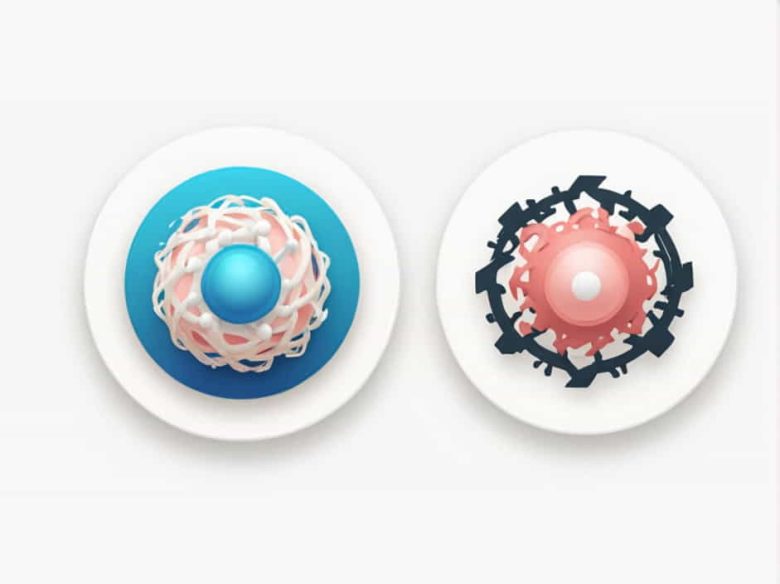Proteins are essential biological molecules that perform a variety of functions in living organisms. They can be classified into two main types: globular proteins and fibrous proteins. While these two types have distinct structural and functional characteristics they also share several similarities.
This topic explores the key similarities between globular and fibrous proteins explaining how they contribute to biological functions.
What Are Globular and Fibrous Proteins?
Globular Proteins
✔ These proteins are spherical or globe-like in shape.
✔ They are soluble in water and found in biological fluids.
✔ Examples include enzymes hemoglobin and antibodies.
Fibrous Proteins
✔ These proteins have a long thread-like structure.
✔ They are insoluble in water and provide structural support.
✔ Examples include collagen keratin and elastin.
Key Similarities Between Globular and Fibrous Proteins
1. Both Are Made of Amino Acids
✔ Like all proteins both globular and fibrous proteins are composed of chains of amino acids.
✔ These amino acids are joined by peptide bonds forming polypeptide chains.
✔ The sequence of amino acids determines the function and properties of the protein.
2. Both Follow the Same Protein Structure Levels
Proteins have four levels of structure and both globular and fibrous proteins follow this hierarchy:
✔ Primary Structure: The unique sequence of amino acids in the polypeptide chain.
✔ Secondary Structure: The folding or coiling of the chain into alpha-helices or beta-sheets.
✔ Tertiary Structure: The 3D shape of the protein essential for function.
✔ Quaternary Structure: Some proteins form complexes with multiple polypeptide chains.
3. Both Perform Essential Functions in the Body
✔ Although their functions differ both types of proteins play vital roles in biological processes.
✔ Globular proteins help in metabolism transport and immune defense.
✔ Fibrous proteins provide structural strength and support in tissues.
4. Both Can Undergo Denaturation
✔ Denaturation is when a protein loses its structure due to factors like heat pH changes or chemicals.
✔ Both globular and fibrous proteins can be denatured leading to loss of function.
✔ For example excessive heat can denature enzymes (globular) or weaken collagen (fibrous).
5. Both Are Found in All Living Organisms
✔ Both plants and animals produce globular and fibrous proteins for various functions.
✔ Globular proteins are present in enzymes hormones and transport molecules.
✔ Fibrous proteins contribute to cell walls connective tissues and protective coverings.
6. Both Have Specific Biological Roles
✔ Although globular proteins are functional and fibrous proteins are structural both are essential for life.
✔ Example: Actin and myosin in muscles involve both types—actin (globular) for contraction and myosin (fibrous) for strength.
7. Both Contain Hydrogen Bonds and Other Interactions
✔ Both types of proteins rely on hydrogen bonds disulfide bridges and ionic interactions to maintain their shape.
✔ These bonds help them function properly within cells and tissues.
Differences Between Globular and Fibrous Proteins
While they have similarities globular and fibrous proteins also have major differences:
| Feature | Globular Proteins | Fibrous Proteins |
|---|---|---|
| Shape | Spherical or compact | Long and thread-like |
| Solubility | Soluble in water | Insoluble in water |
| Function | Metabolic enzymatic transport | Structural support |
| Examples | Hemoglobin enzymes insulin | Collagen keratin elastin |
| Flexibility | More flexible | Rigid and tough |
Both globular and fibrous proteins are vital for life sharing similarities in their amino acid composition structural levels biological importance and interactions. While their functions and shapes differ they work together to maintain cellular processes and structural integrity in organisms. Understanding these similarities helps in biotechnology medicine and nutrition where proteins play a crucial role in health and development.



